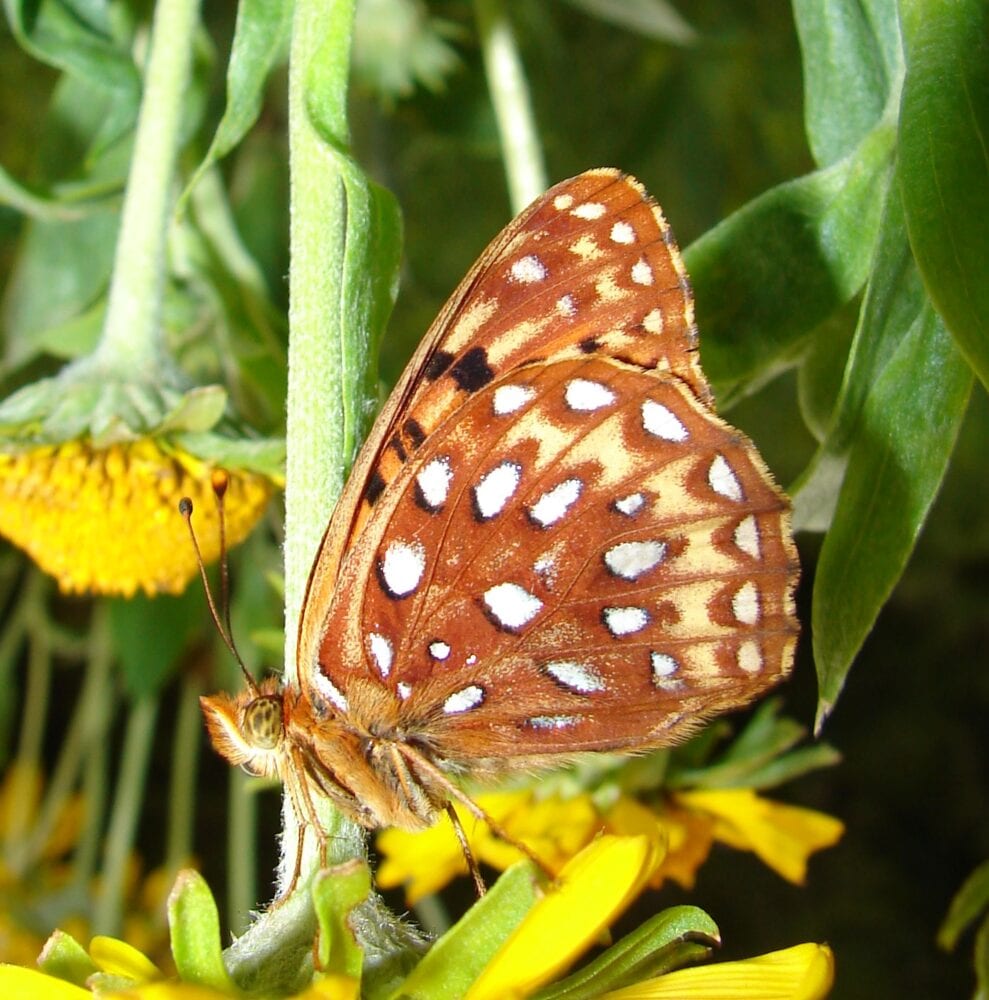Argynnis nausicaa capitanensis (Capitan Mountains Nausicaa Fritillary)
Taxonomy
- Class: INSECTA
- Order: LEPIDOPTERA
- Family: NYMPHALIDAE
- Genus: Argynnis
- Scientific Name: Argynnis nausicaa capitanensis (R. Holland, 1988)
- Common Name: Capitan Mountains Nausicaa Fritillary
- Synonyms: Speyeria atlantis ssp. capitanensis R. Holland, 1988 ()
Taxonomic Name Source
Pelham, J. P. 2008. A catalogue of the butterflies of the United States and Canada with a complete bibliography of the descriptive and systematic literature. The Journal of Research on the Lepidoptera. Volume 40. 658 pp. Revised 14 February, 2012.
Species Occurrence Data From: Global Biodiversity Information Facility (GBIF)
Agency Conservation Status
- SGCN
- NMDGF:
- USFWS:
- BLM:
- USFS:
- IUCN Red List: Not Evaluated
- Nature Serve Global: TNR
- NHNM State: SNR
- NM Endemic YES
Agency Conservation Status
| SGCN | NMDGF | USFWS | BLM Status | USFS | IUCN Red List |
Nature Serve Global |
NHNM State | NM Endemic |
|---|---|---|---|---|---|---|---|---|
| Not Evaluated | TNR | SNR | YES |
Description
Southwestern Fritillary is of medium size. Dorsally males are bright orange with black lines, spots and chevrons; females are less bright. Underneath, the hindwing is red-brown in the discal region with a narrow post-discal blond band, all decorated by silvered white spots. Compared to Northwestern Fritillary, black markings are heavier on the upperside, particularly along DFW veins. Populations in north-central mountains have gray-blue eyes, unlike sympatric Aphrodite or Great Spangled. Populations south of I-40 and in the Sandia Mountains have amber-tan eyes. Both eye color morphs may occur in some areas. The ID challenge is simplified in southern populations where nausicaa is the only Argynnis species.
The Capitan, Sierra Blanca and Sacramento Mountains (counties: Li,Ot) of south-central New Mexico host Argynnis nausicaa capitanensis (R. Holland 1988). This is our darkest race on the upper side, darker even than A. n. dorothea. It also has tan/amber eyes.
Description courtesy of Steven J. Cary, Butterflies of New Mexico, 2024





